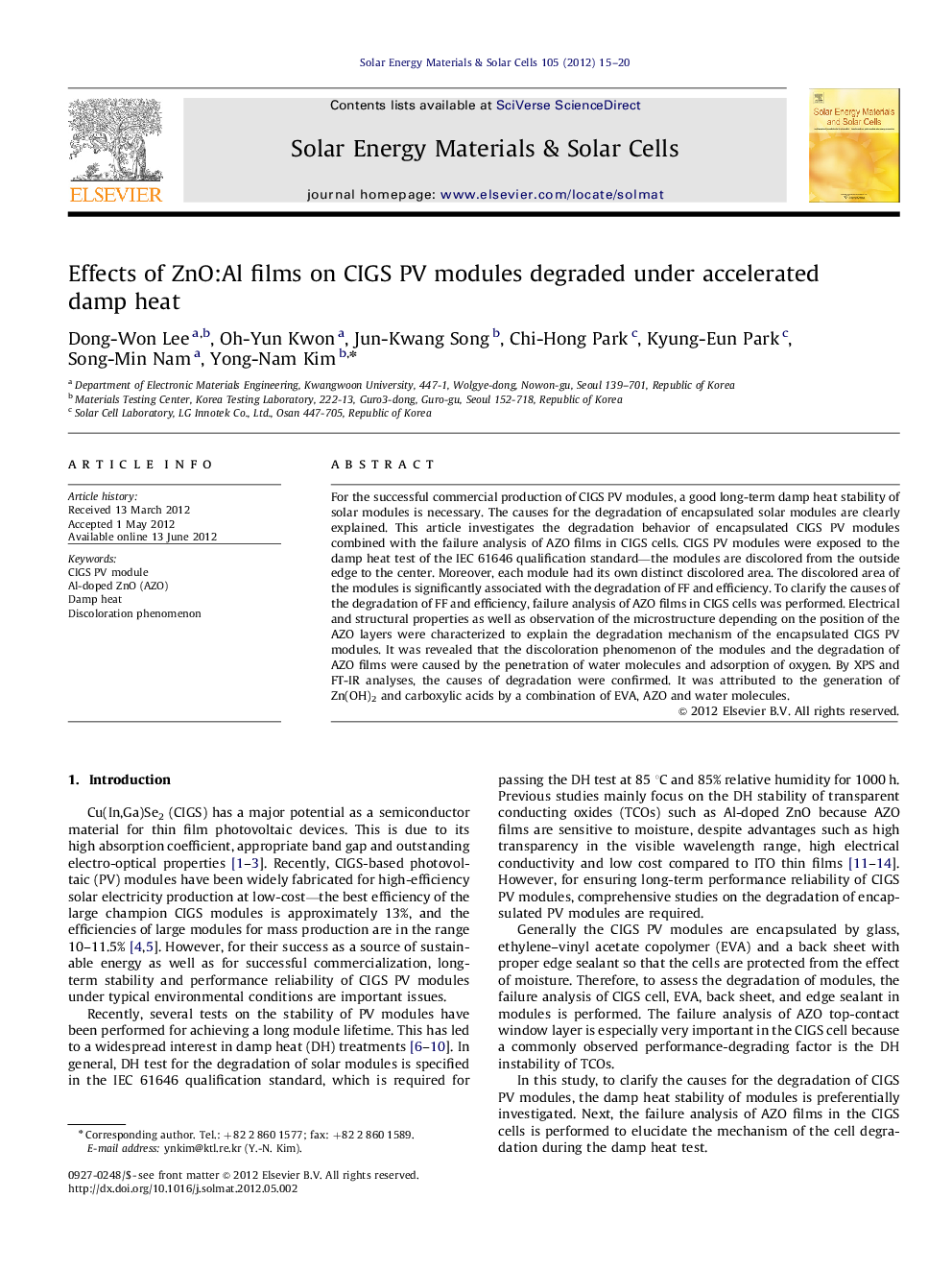| Article ID | Journal | Published Year | Pages | File Type |
|---|---|---|---|---|
| 78942 | Solar Energy Materials and Solar Cells | 2012 | 6 Pages |
For the successful commercial production of CIGS PV modules, a good long-term damp heat stability of solar modules is necessary. The causes for the degradation of encapsulated solar modules are clearly explained. This article investigates the degradation behavior of encapsulated CIGS PV modules combined with the failure analysis of AZO films in CIGS cells. CIGS PV modules were exposed to the damp heat test of the IEC 61646 qualification standard—the modules are discolored from the outside edge to the center. Moreover, each module had its own distinct discolored area. The discolored area of the modules is significantly associated with the degradation of FF and efficiency. To clarify the causes of the degradation of FF and efficiency, failure analysis of AZO films in CIGS cells was performed. Electrical and structural properties as well as observation of the microstructure depending on the position of the AZO layers were characterized to explain the degradation mechanism of the encapsulated CIGS PV modules. It was revealed that the discoloration phenomenon of the modules and the degradation of AZO films were caused by the penetration of water molecules and adsorption of oxygen. By XPS and FT-IR analyses, the causes of degradation were confirmed. It was attributed to the generation of Zn(OH)2 and carboxylic acids by a combination of EVA, AZO and water molecules.
► Influence on the degradation of CIGS modules after DH test is investigated. ► Electrical properties of modules deteriorated after DH exposure. ► Failure analysis of the AZO films is performed to clarify these phenomena. ► Change in characteristics of AZO films is due to the degradation of modules. ► Main cause of degradation mechanism is chemical action by the water molecules.
